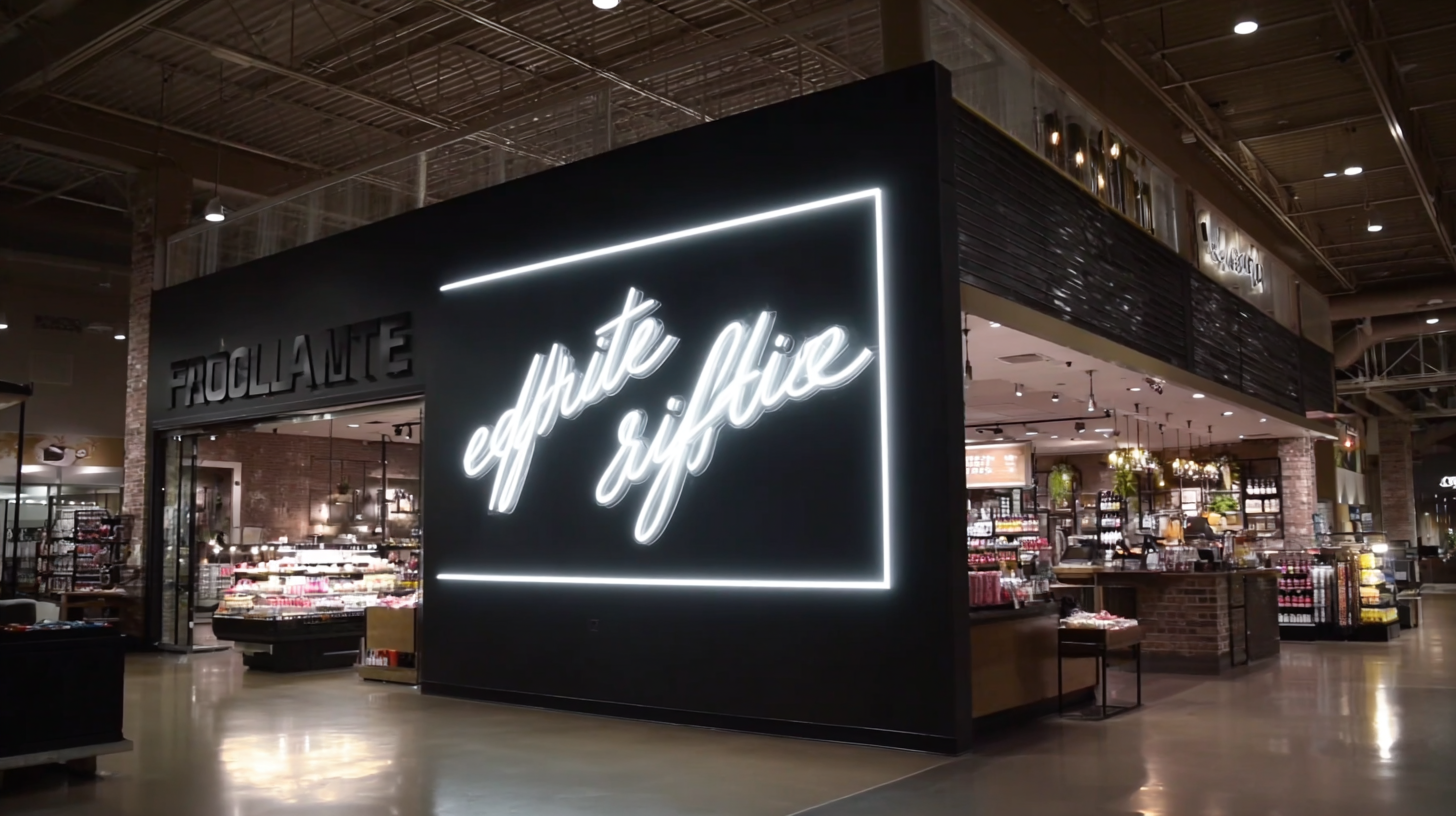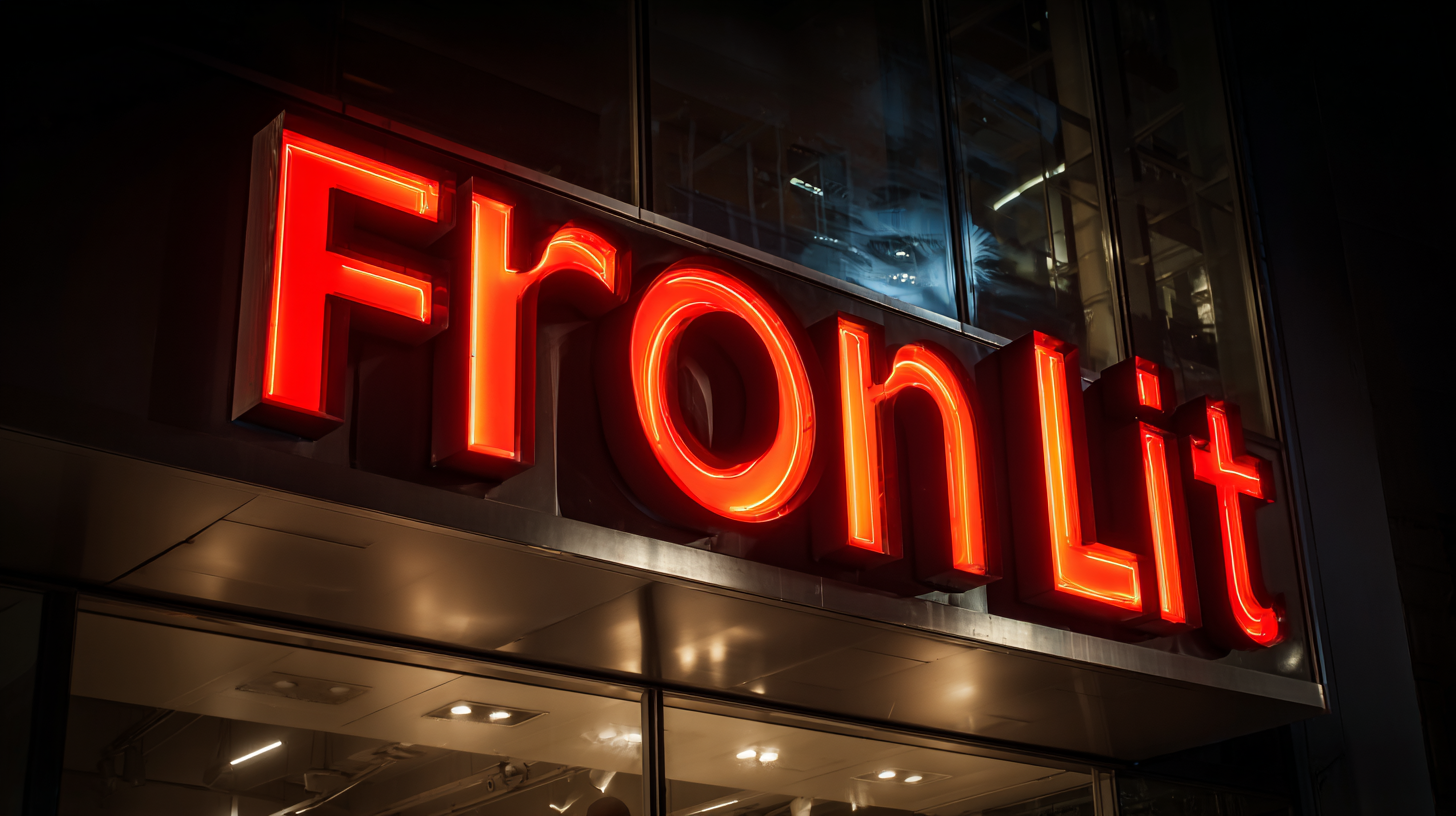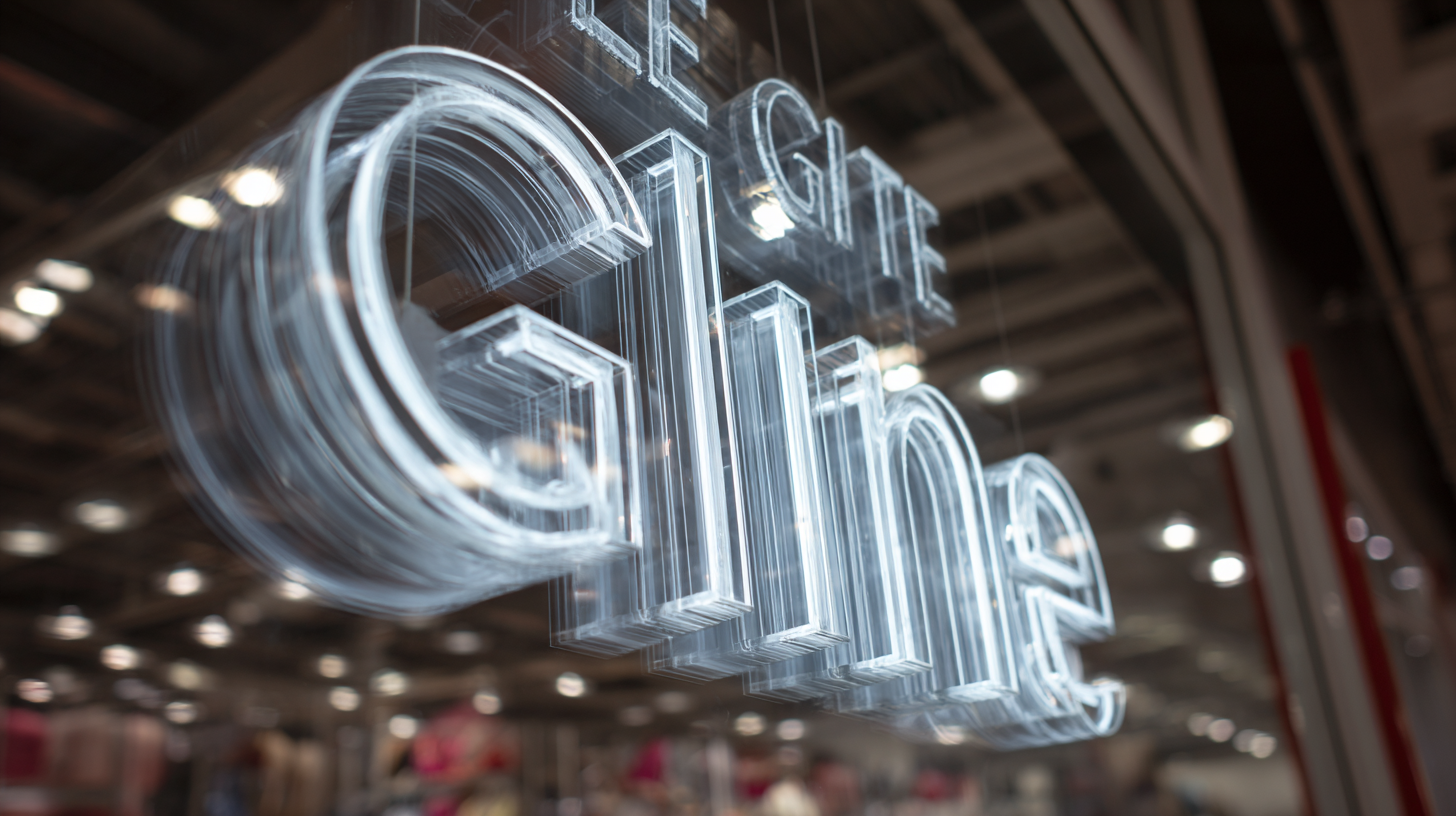



In the competitive retail landscape, effective branding and visual communication are paramount for attracting and retaining customers. One of the most impactful tools in achieving this is the Frontlit Sign, which not only enhances visibility but also significantly influences consumer behavior. According to a report by the International Sign Association, up to 76% of consumers enter a store they have never visited before based solely on its signage. Furthermore, studies have shown that effective signage can boost sales by over 20%, underscoring the importance of strategically positioned Frontlit Signs in retail environments. As retailers strive to create compelling, memorable experiences, understanding how to maximize the effectiveness of these signs becomes essential for optimizing customer engagement and driving conversions. This blog will explore the best practices for utilizing Frontlit Signs in retail settings and provide actionable tips to elevate their impact.

Frontlit signs are an essential element in retail environments, offering both visibility and aesthetic appeal. Featuring a translucent material that allows light to shine through, these signs create a vibrant and eye-catching display that can attract customers from a distance. One of the main benefits of frontlit signs is their ability to enhance branding by showcasing company logos and slogans in brilliantly lit graphics. This illumination not only makes the signs stand out but also reinforces brand recognition, helping businesses create a lasting impression on potential buyers.
Moreover, frontlit signs are versatile and can be customized to fit various retail settings. Whether used as storefront displays, promotional signage, or directional indicators, they can easily adapt to any environment, contributing to a cohesive marketing strategy. Retailers can maximize the impact of these signs by strategically placing them at eye level and ensuring they are well-lit, particularly at night or in poorly lit areas. By integrating frontlit signs into their overall design, retailers can improve customer engagement and drive foot traffic, ultimately enhancing sales and brand loyalty.
When it comes to maximizing the impact of frontlit signs in retail environments, choosing the right materials and designs is essential. According to a report by the Sign Research Foundation, over 76% of customers believe that signage reflecting a brand's unique identity significantly influences their purchasing decisions. Thus, selecting high-quality materials that enhance visibility, such as acrylic or polycarbonate, can contribute to a sign's effectiveness. These materials not only withstand various weather conditions but also offer vibrant color reproduction, which can attract more customers.
Designing the signage to be eye-catching yet informative is equally important. A study by FedEx Office found that nearly 68% of consumers say that they have made a purchase decision based on the quality of a company's signage. Therefore, incorporating bold typography and contrasting colors can create a visual hierarchy that draws attention. Additionally, including an element of local culture in the design can resonate more with the target audience, thus enhancing the sign's overall impact and driving foot traffic into the store. By focusing on materials and design, retailers can create frontlit signs that stand out and effectively communicate their brand message.
 Strategic placement of frontlit signs is crucial in retail environments to capture attention and enhance customer engagement. The visibility of these signs can significantly influence foot traffic and drive sales. Key locations to consider for maximizing impact include store entrances, checkout areas, and high-traffic aisles. Placing signs at the entrance not only draws customers in but also sets the tone for their shopping experience, making it the first point of interaction with your brand.
Strategic placement of frontlit signs is crucial in retail environments to capture attention and enhance customer engagement. The visibility of these signs can significantly influence foot traffic and drive sales. Key locations to consider for maximizing impact include store entrances, checkout areas, and high-traffic aisles. Placing signs at the entrance not only draws customers in but also sets the tone for their shopping experience, making it the first point of interaction with your brand.
In addition to entrances, prominent locations within the store, like checkout lanes, can serve as effective spots for strategic messaging. Customers waiting in line are often receptive to promotional content, making it an ideal moment to showcase special deals or highlight new products. Furthermore, positioning signs along high-traffic aisles ensures that shoppers notice important information while browsing, ultimately guiding their purchasing decisions. By carefully selecting these key locations, retailers can maximize the visibility and effectiveness of frontlit signs, turning casual shoppers into loyal customers.
In retail environments, proper illumination is key to maximizing the impact of frontlit signs. Studies indicate that consumers are 80% more likely to engage with a retail display when it is well-lit. This emphasizes the importance of not only the signage but also the lighting techniques used to highlight them. Strategically placing lights to create contrast can enhance visibility and attract foot traffic, making illuminated signs more effective in capturing consumer attention.
Tips for optimizing illumination include utilizing LED lighting, which is proven to enhance brightness while being energy-efficient. Positioning lights at angles to minimize glare will ensure that the signs remain readable from various viewpoints. Additionally, incorporating dynamic lighting elements, such as color-changing LEDs, can create a visually stimulating experience that encourages exploration and engagement with the store's offerings.
Employing techniques like layering light can also amplify the overall aesthetic. Spotlighting specific products with focused lighting complements the frontlit signs, drawing customers' eyes exactly where you want them. According to a report by the Retail Industry Leaders Association, stores that effectively implement these lighting strategies can see sales increases of up to 30%. By understanding and applying these lighting techniques, retailers can significantly enhance the efficacy of their signage and bolster their overall sales performance.

In the competitive landscape of retail, measuring the success of frontlit signs is crucial for businesses aiming to enhance visibility and drive sales. These illuminated signs serve as a beacon, capturing the attention of potential customers and drawing them into the store. To effectively analyze their performance, retailers should track various metrics, including foot traffic, sales conversion rates, and customer engagement. Utilizing techniques like A/B testing can also provide valuable insights into which designs or placements resonate most with the target audience.
Beyond quantitative analysis, qualitative feedback from customers can further inform the effectiveness of frontlit signs. Retailers can conduct surveys or gather informal customer opinions to understand the emotional impact these signs have on shoppers. By combining data with customer sentiment, businesses can refine their signage strategies to ensure maximum impact. Additionally, regularly updating the design and messaging based on performance data can keep the store's visual appeal fresh and aligned with current promotions or seasonal trends, ultimately enhancing overall retail performance.
